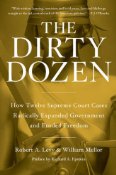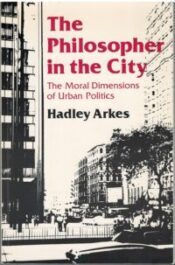
The Dirty Dozen, How Twelve Supreme Court Cases Radically Expanded Government and Eroded Freedom, by Robert A. Levy and William Mellor
“The framers intended for the elected representatives of the people, not the Supreme Court, to change the Constitution.†Robert A. Levy and William Mellor in The Dirty Dozen
 If you want to understand how the Constitution became a shadow of its former self, The Dirty Dozen is an excellent place to start. Levy and Mellor chose twelve modern Supreme Court cases that improperly altered the fundamental meaning of the supreme law of the land. The title is a bit of a misnomer because the book actually covers a baker’s dozen of cases, plus numerous dishonorable mentions. The Dirty Dozen has dedicated a full chapter to each of the twelve cases, plus a couple of postscripts.
If you want to understand how the Constitution became a shadow of its former self, The Dirty Dozen is an excellent place to start. Levy and Mellor chose twelve modern Supreme Court cases that improperly altered the fundamental meaning of the supreme law of the land. The title is a bit of a misnomer because the book actually covers a baker’s dozen of cases, plus numerous dishonorable mentions. The Dirty Dozen has dedicated a full chapter to each of the twelve cases, plus a couple of postscripts.
Robert A. Levy is the chairman of the Cato Institute, and William Mellor is president and General Counsel for the Institute of Justice, both libertarian organizations. Levy and Mellor make a solid case that these twelve plus Supreme Court decisions gutted the limits that the Framers had carefully crafted into the Constitution. Surprisingly, half of these cases occurred in a single decade while Franklin Roosevelt served as president. All twelve cases are important, but these half-dozen did more than thwart the checks and balances designed to protect liberty, they gave license to following courts that they too were free to rule based on justices’ assessment of popular sentiment. From that ignominious decade forward, the Supreme Court has succeeded in supplanting the Constitution as the ultimate arbiter of what our government can and cannot do … and even how it may do it.
Here are the decisions handed down between 1934 and 1944.
- 1934—Home Building & Loan Association v. Blaisdell negated the Contracts Clause, allowing states, and eventually the Federal government to ignore private contract obligations when it suited their needs.
- 1937—Helvering v. Davis untied the General Welfare Clause from enumerated powers, effectively giving the Federal government general, rather than enumerated powers.
- 1939—United States v. Miller conditioned the right of the people to keep and bear arms to the militia clause, thus giving the government authority to restrict individual 2nd Amendment rights.
- 1942—Wickard v. Filburn unlocked the Commerce Clause from any restraint whatsoever, allowing the national government unprecedented authority over states and individuals.
- 1943—National Broadcasting Co. v. United States excised the non-delegation doctrine from the Constitution, allowing administrative agencies to simultaneously exercise legislative, executive, and judicial powers.
- 1944—Korematsu v. United States overruled the Due Process Clause during times of emergency.
The other six cases are equally important, but not as concentrated in time. For each of the Dirty Dozen, Levy and Mellor present the case in four sections.
- What is the Constitutional issue?
- What were the facts?
- Where did the court go wrong?
- What are the implications?
The language is clear and free of legaleze. Although lawyers may find the book a great libertarian synopsis of important Constitutional cases, Levy and Mellor have written a book clearly aimed at those who are interested in a practical explanation of how a national government under a supposedly limited-government constitution grew to comprise twenty-five percent of the economy. Levy and Mellor show that the Supreme Court is largely responsible.
With these dozen decisions, the plain English of the Constitution was no longer a barrier to concentrating immeasurable power in Washington D.C., and all of the governments of the United States—national, state, and local—had been fundamentally transformed into something unrecognizable to the Framers.

After reading The Dirty Dozen, I came to believe that erosion of the Constitution does not trickle down like an irritating drizzle, but hits us in torrential waves. Today, we are facing another bout of stormy weather. It is past time to merely survive another onslaught—this time we must collectively reverse the tide.
James D. Best is the author of Tempest at Dawn, a novel about the 1787 Constitutional Convention.
 The posts are coming!
The posts are coming!

0 comments
Kick things off by filling out the form below.
Leave a Comment